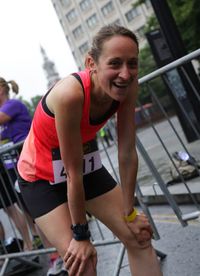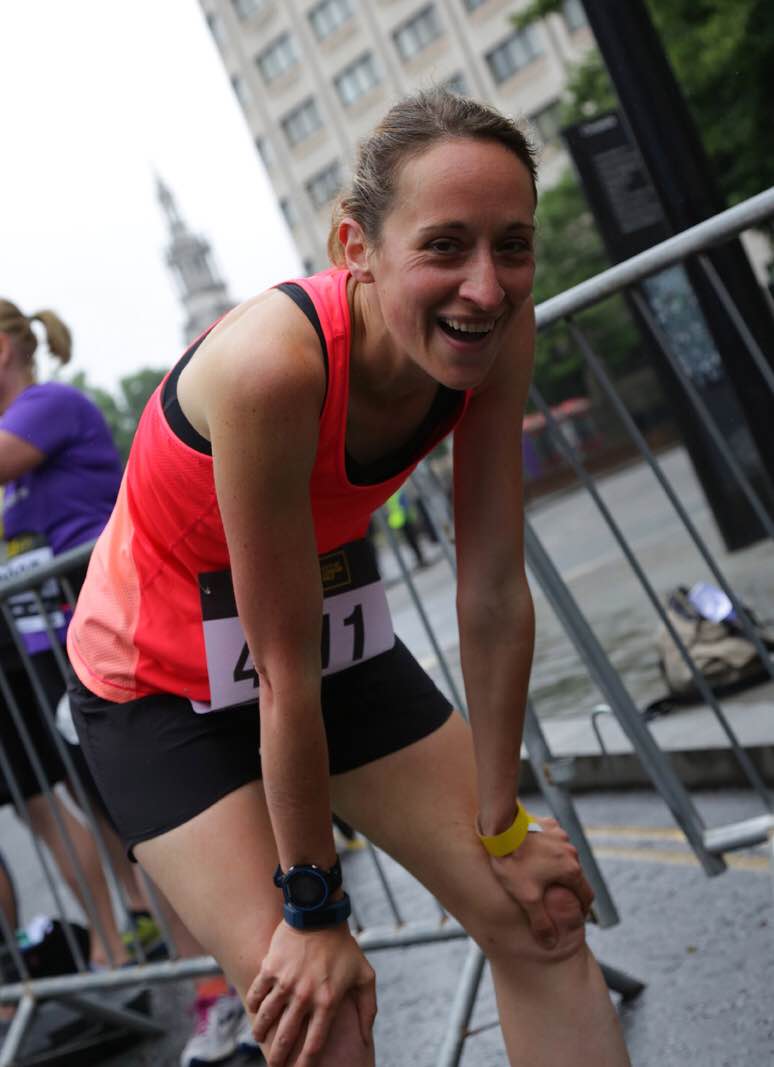The importance of stretching for runners—plus, 7 stretches you need to know about
Nail your pre and post-run dynamic stretches with our expert-approved list


Stretching for runners is important, but not for the reasons you might think. Here the experts reveal exactly why you should stretch before and after your run, plus the seven key stretches you need to know about.
It’s long been accepted that after you lace up your favorite running shoes and put on your fitness tracker, you move onto static stretches—all part of a good running routine that will help prevent injury before and after you tick off your miles.
But actually, the science doesn't back this up. While static stretches will certainly help your static flexibility, they don’t necessarily do anything to warm up and prepare your muscles for a run. Hundreds of studies have examined the evidence and concluded that being flexible doesn’t seem to protect you from running injuries—and a few even find that being too flexible actually makes you more injury-prone. A Cochrane Review in 2007 found stretching won't even help prevent muscle soreness. Surprised? Us too.
But does that mean you should give up on stretching for running altogether and just stand still before and after you run? Definitely not. While flexibility may not help prevent injury and prepare you for your run, good mobility is essential for runners. You can achieve this with a dynamic warm-up of the muscles you're going to use and expect in return a better performance overall.
"A short warm-up routine of dynamic stretching can help your muscles feel refreshed," says Aida Yahaya of global online stretching studio Good Stretch. "It’s more about relieving everyday soreness and preventing muscle imbalances before your workout—that way you don’t have to struggle against your body during your run. We always recommend starting with dynamic stretches and mobility exercises before a workout.”

The best stretches for runners
The best stretches for runners will create tension in your muscles, but will not be painful.
"A sharp or stabbing pain means that you’re stretching your muscles beyond their capacity for flexibility. Reduce range of motion straight away," says Aida, adding, "Your muscles also need a rest from deep stretching so make sure you take at least one day off between stretching sessions or stretch different muscles groups daily before and after you run.”
Sign up to our free daily email for the latest royal and entertainment news, interesting opinion, expert advice on styling and beauty trends, and no-nonsense guides to the health and wellness questions you want answered.
“Effective stretching before running will include dynamic movements to use the quadriceps, hamstrings, and hip flexors and get blood flowing faster,” explains Aida. “Ideally, strive for about ten minutes of leg swings, squats, lunges, butt kicks, jumping jacks and high knees.”
When it comes to stretching after running, whether you're running outside or doing an indoor HIIT treadmill workout, cool down with a slow jog or a walk until the heart rate has recovered. Then move onto static and dynamic stretches.
“Move through some static stretches that focus on specific muscle groups, such as the quadriceps, hamstrings, glutes, lower back and calves. Slowly move into the stretch position until you feel a tension point of about 7 out of 10. Hold the stretch position for 30-60 seconds while relaxing and breathing deeply. Come out of the stretch carefully and perform on the opposite side if necessary," Aida adds.
Here are the seven best stretches for running, as approved by our experts. If you're looking to follow along without video, check out one of the best stretching apps instead.
1. Kneeling Hip Flexor Stretch
Hip flexors can get very tight in everyday life, particularly if you spend a lot of time sitting. Tight hip flexors can make even walking a bit uncomfortable, so stretching them out can have huge benefits not just for running but everyday life. This is one to focus on when you're stretching before running.
How to do it: Kneel on one foot and the other knee. If needed, hold on to something to keep your balance and then push your hips forward. Use one of the best thick yoga mats with extra padding to protect knees and offer more stability. Hold for 30-60 seconds and repeat on the other leg.
Watch demo:
2. Standing High-leg Hamstring Stretch
Hamstrings can be another casualty of sitting too much. Having the leg in that 90-degree bend shortens and tightens them, particularly if you sit at a desk all day.
How to do it: Stand with one foot raised onto a chair or low table. Keep your leg slightly bent and lean your chest towards your thighs. Hold for 30-60 seconds and repeat with the other leg.
Watch demo:
3. Standing Toe-up Calf Stretch
Whether you're on a couch to 5k journey or prefer running on a treadmill vs outside, almost everyone who runs will suffer from tight calves at some point. This is why prevention is key. Stretching them out and loosening up the muscle regularly can prevent tight knots from forming.
How to do it: Start by standing with one knee bent and the other leg straight out in front of you. Point the toes on your straight leg towards your body and lean forwards, keeping your back straight and resting your hands on your bent knee. Hold for 30 seconds before repeating on the other leg. You'll feel the burn with this one, but you'll thank yourself later!
Watch demo:
4. Standing quad stretch
The standing quad stretch is a simple stretch with a little balance training in the mix. It's great for stretching out tired quads that have worked hard post-run.
How to do it: Stand up straight with your feet hip-width apart. If necessary, put your left hand on a wall or sturdy object for balance. Bend your right knee and bring your right foot up behind your body towards the buttocks. Grab your right foot with your right hand. Keep your right knee pointed towards the floor and gently push your hips forwards very slightly, keeping your knees and thighs together. Hold for 30 seconds before repeating on the other leg.
Watch demo:
5. Ankle mobility heel lifts
Runners often neglect their ankles, but it’s important to keep them flexible and mobilized for a better running technique and ultimate support. Ankle mobility heel lifts can help stabilize ankles, and will also stretch out tight calves.
How to do it: Stand with your back straight and slowly rise up onto the balls of the feet, taking care not to lock the knees—simple!
Watch demo:
6. Standing lower back stretch
Lower back pain is common among runners, so giving your back some TLC during your stretching routine pre and post-run is never a bad idea. You can ease tension and pressure, and improve mobility overall.
How to do it: Stand with feet together, bending forward slightly at the hips while arching your back. Slide your hands down your legs as far as you can go, and if you can, wrap your arms around the back of your knees. Hug legs, and hold for 30 seconds.
Watch demo:
7. Pigeon pose
It's a common pose in yoga for runners, and for good reason. Your glutes are the biggest muscle in your body and work hard during your runs. Easing into this stretch will no doubt feel fantastic when you're stretching after running. It'll open up the hip flexors, stretching the glutes and quads, and ease tension in the lower back.
How to do it: Start on hands and knees or in a downward dog position, then bring your right leg forwards to the front of your mat. Place your shin parallel to the front of your mat and release your left leg back down onto the mat. Your hips should be level with the mat. Place your hands by your sides and hold for 30-60 seconds. Then repeat with the other leg. It's a challenging stretch but it can be modified until you progress and become more flexible.
Watch demo:
Kate Carter is an experienced journalist who worked for the Guardian for a decade before going freelance. She writes for the Guardian, Runners World, and World Athletics amongst many other publications, and presents for The Running Channel. She is also a sub three hour marathon runner and an England Athletics coach.
